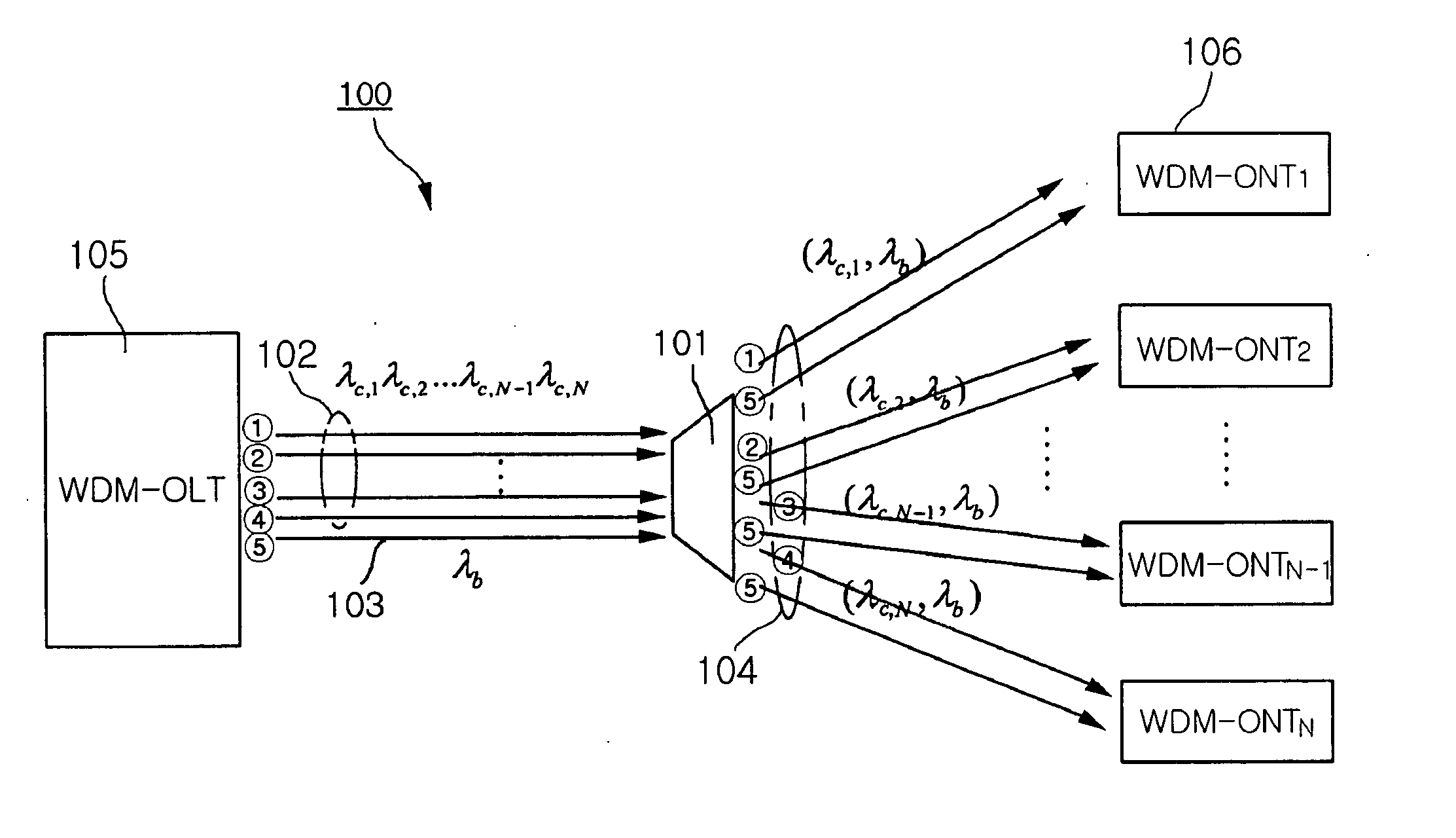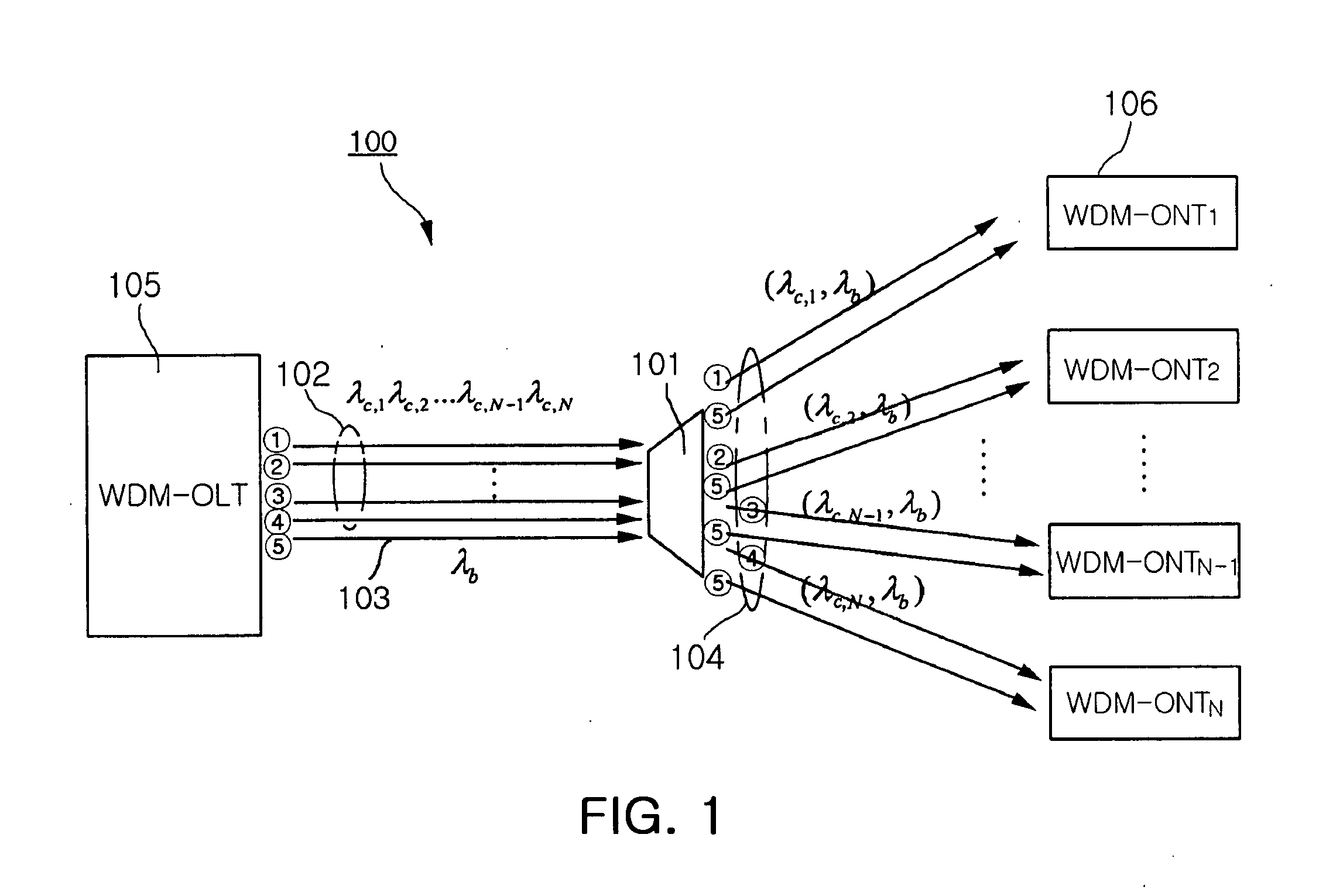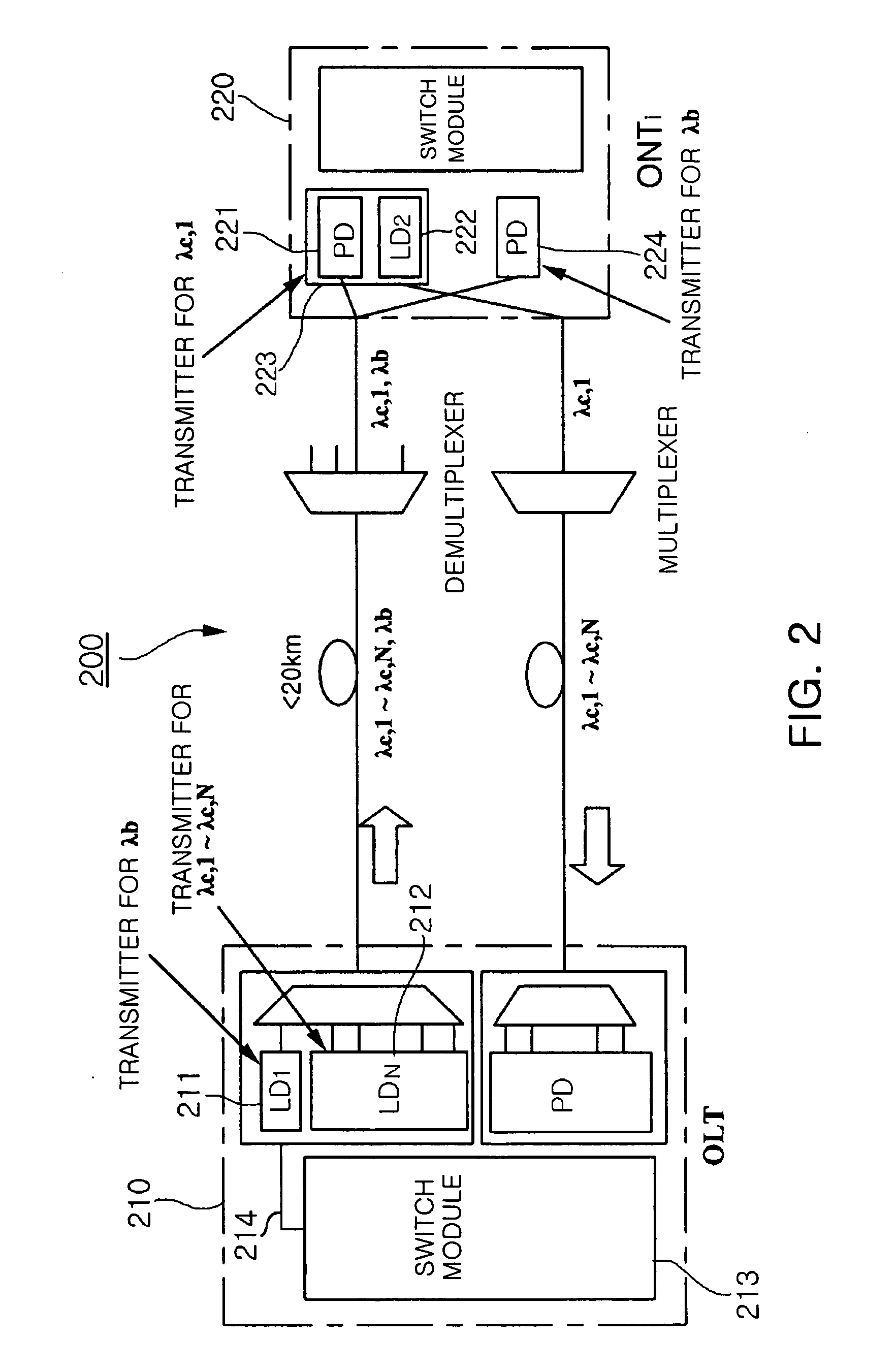Dynamic multicast group management and service wavelength allocation method for communication-broadcasting convergence service in WDM-PON
a technology of dynamic multicast and wavelength allocation, applied in the direction of data switching networks, wavelength-division multiplex systems, multiplex communication, etc., can solve the problems of many subscribers' network structures, preventing the quality of broadcasting services from being degraded, and limited personal effects of communication having a point-to-point information exchange function, etc. achieve the effect of maximum multicast servi
- Summary
- Abstract
- Description
- Claims
- Application Information
AI Technical Summary
Benefits of technology
Problems solved by technology
Method used
Image
Examples
Embodiment Construction
[0026] The present invention will now be described in detail in connection with preferred embodiments with reference to the accompanying drawings.
[0027]FIG. 1 is a view showing the entire configuration of a hybrid type WDM-PON to which the present invention is applied.
[0028] As shown in FIG. 1, the hybrid type WDM-PON 100 to which the present invention is applied has a typical tree structure that is centered around an optical splitter 101. The hybrid type WDM-PON 100 has a cost saving effect because optical fiber used in a plurality of subscriber services is shared up to a maximum distance. In order to apply WCM technology to a PON type subscriber distribution structure, a wavelength multiplexer / demultiplexer that separates a plurality of multiplexed wavelengths from a single strand of optical fiber is employed as the optical splitter 101. According to current technology, a maximum of about 16 or 32 wavelengths can be used through the use of an Arrayed Waveguide Grating (AWG). An ...
PUM
 Login to View More
Login to View More Abstract
Description
Claims
Application Information
 Login to View More
Login to View More - R&D
- Intellectual Property
- Life Sciences
- Materials
- Tech Scout
- Unparalleled Data Quality
- Higher Quality Content
- 60% Fewer Hallucinations
Browse by: Latest US Patents, China's latest patents, Technical Efficacy Thesaurus, Application Domain, Technology Topic, Popular Technical Reports.
© 2025 PatSnap. All rights reserved.Legal|Privacy policy|Modern Slavery Act Transparency Statement|Sitemap|About US| Contact US: help@patsnap.com



